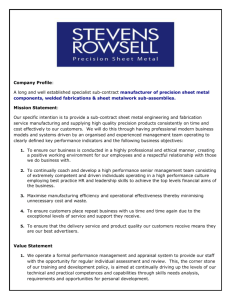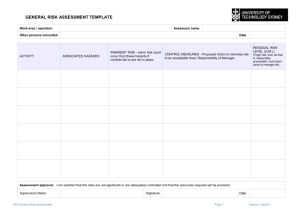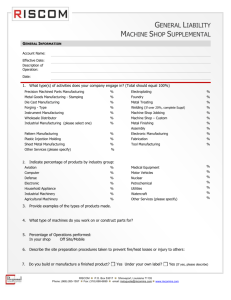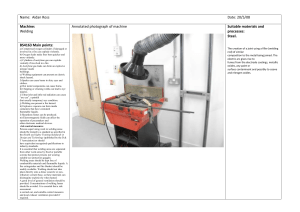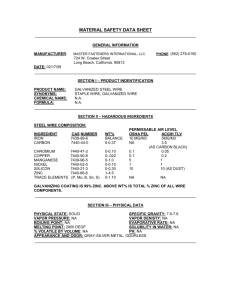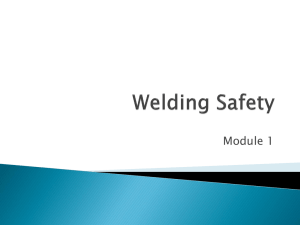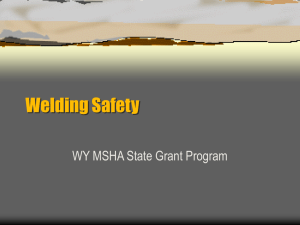Metals and Engineering
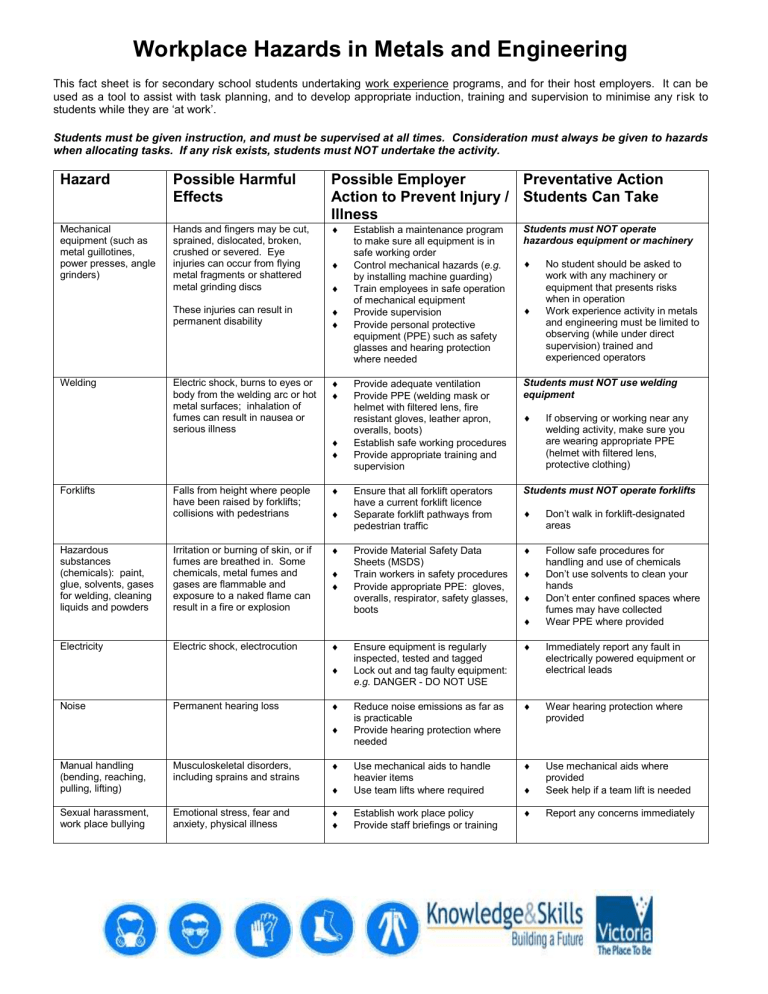
Workplace Hazards in Metals and Engineering
This fact sheet is for secondary school students undertaking work experience programs, and for their host employers. It can be used as a tool to assist with task planning, and to develop appropriate induction, training and supervision to minimise any risk to students while they are ‘at work’.
Students must be given instruction, and must be supervised at all times. Consideration must always be given to hazards when allocating tasks. If any risk exists, students must NOT undertake the activity.
Hazard
Mechanical equipment (such as metal guillotines, power presses, angle grinders)
Welding
Forklifts
Hazardous substances
(chemicals): paint, glue, solvents, gases for welding, cleaning liquids and powders
Electricity
Noise
Manual handling pulling, lifting)
Sexual harassment, work place bullying
Possible Harmful
Effects
Hands and fingers may be cut, sprained, dislocated, broken, crushed or severed. Eye injuries can occur from flying metal fragments or shattered metal grinding discs
These injuries can result in permanent disability
Electric shock, burns to eyes or body from the welding arc or hot metal surfaces; inhalation of fumes can result in nausea or serious illness
Falls from height where people have been raised by forklifts; collisions with pedestrians
Irritation or burning of skin, or if fumes are breathed in. Some chemicals, metal fumes and gases are flammable and exposure to a naked flame can result in a fire or explosion
Electric shock, electrocution
Permanent hearing loss
Musculoskeletal disorders,
Emotional stress, fear and anxiety, physical illness
Possible Employer
Action to Prevent Injury /
Illness
Establish a maintenance program to make sure all equipment is in safe working order
Control mechanical hazards ( e.g
. by installing machine guarding)
Train employees in safe operation of mechanical equipment
Provide supervision
Provide personal protective equipment (PPE) such as safety glasses and hearing protection where needed
Provide adequate ventilation
Provide PPE (welding mask or helmet with filtered lens, fire resistant gloves, leather apron, overalls, boots)
Establish safe working procedures
Provide appropriate training and supervision
Ensure that all forklift operators have a current forklift licence
Separate forklift pathways from pedestrian traffic
Provide Material Safety Data
Sheets (MSDS)
Train workers in safety procedures
Provide appropriate PPE: gloves, overalls, respirator, safety glasses, boots
Ensure equipment is regularly inspected, tested and tagged
Lock out and tag faulty equipment: e.g.
DANGER - DO NOT USE
Reduce noise emissions as far as is practicable
Provide hearing protection where needed
Use mechanical aids to handle heavier items
Use team lifts where required
Establish work place policy
Provide staff briefings or training
Preventative Action
Students Can Take
Students must NOT operate hazardous equipment or machinery
No student should be asked to work with any machinery or equipment that presents risks when in operation
Work experience activity in metals and engineering must be limited to observing (while under direct supervision) trained and experienced operators
Students must NOT use welding equipment
If observing or working near any welding activity, make sure you are wearing appropriate PPE
(helmet with filtered lens, protective clothing)
Students must NOT operate forklifts
Don’t walk in forklift-designated areas
Follow safe procedures for handling and use of chemicals
Don ’t use solvents to clean your hands
Don ’t enter confined spaces where fumes may have collected
Wear PPE where provided
Immediately report any fault in electrically powered equipment or electrical leads
Wear hearing protection where provided
Use mechanical aids where provided
Seek help if a team lift is needed
Report any concerns immediately




